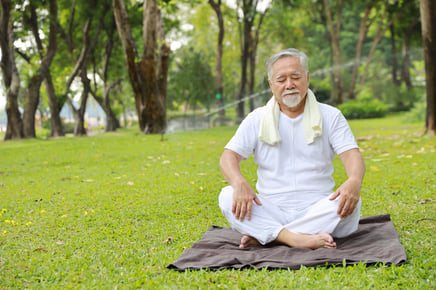 It has often been thought that core strength can only to be achieved through sit ups, crunches, and planks but in recent years there has been a lot more discussion about the way we breathe and how it effects our core. If you participate in 1-1 training or group fitness, you have probably heard your trainer tell you to breathe and brace your core through a particular exercise. What does it mean to effectively brace your core and why is it important? Is it to see your abdominals, provide you strength or to help with your posture? In all reality, we use our core for many daily tasks such as standing tall, getting up off a chair, or even walking. Learning how to brace your core is fundamental in creating a strong foundation for all movements and can also help to aide in injury prevention.
It has often been thought that core strength can only to be achieved through sit ups, crunches, and planks but in recent years there has been a lot more discussion about the way we breathe and how it effects our core. If you participate in 1-1 training or group fitness, you have probably heard your trainer tell you to breathe and brace your core through a particular exercise. What does it mean to effectively brace your core and why is it important? Is it to see your abdominals, provide you strength or to help with your posture? In all reality, we use our core for many daily tasks such as standing tall, getting up off a chair, or even walking. Learning how to brace your core is fundamental in creating a strong foundation for all movements and can also help to aide in injury prevention.
As you may know, your core is not merely just a sheet of muscle. In fact, there are several muscles that work together to brace your core and support your spine. These muscles include rectus abdominis, transverse abdominis, internal and external obliques, erector spinae, and your quadratus lumborum (also known as the QL muscle). These mighty muscles work together to keep your spine stabilized and upright. If there is weakness in one or a few of these muscles, it can lead to lower back pain, hip pain, or injury. Knowing this foundation, it can help us know how to engage these muscles for them to work altogether.
When it comes to your core, breathing is an excellent tactic to get those muscles working! What you can start with is a deep breathing exercise. Take a moment to breathe. Start by inhaling through the nose, really feeling your ribs expand. The next step is to brace the core muscles. Tighten your midsection by pulling your navel to the spine, think of this as bracing for impact – you will feel your ribs flare downwards as you do this movement. Of course, do not forget to exhale and expend the air being held in the lungs during the bracing. Some exercises can also be done to help brace the core such as squats, bird dogs, planks, and the list goes on and on.
At the end of the day, it is important to understand the proper breathing technique that coincides with bracing your core. Take a moment to think of your favorite exercise. Is it a squat or a bicep curl? Whatever it may be, there are two main stages in the lift that correlate with the proper breathing and core bracing technique.
Let’s start with a squat and keep these steps in bind for breathing and bracing.
- When you are standing, try to keep your shoulders rolled back and down, allowing optimal space for your lungs to expand.
- As you go down into the squat, gravity is helping you get lower, this is the key motion to allow yourself to take a deep breath in.
- When you are ready to stand from the squatting position, this is where bracing your core is the most effective. As you push to stand, let out a breath through your mouth and brace your core.
The push of the air coming out of your lungs will help to contract your core muscles and make the movement much smoother.
Now, here is a challenge for you! Think of any movement you do daily and try to practice it at least one time each day. When gravity is assisting, that is the time to breathe in, when you are pushing up against gravity, brace that core and exhale! Learning to brace your core takes time and a lot of practice. Bracing your core can be done as you’re completing your daily tasks. Take time to practice, and watch it help you in your day to day!


 Did you know that you can exercise your abs every single day of the week? Normally with strength training, you should wait 48 hours before lifting with those same muscles again—however, since the abdominal muscles are made for endurance by performing jobs like supporting posture and breathing, they can be worked all 7 days of the week! If you are particularly sore after an ab workout, still use your best judgment, and delay working them until the soreness is gone.
Did you know that you can exercise your abs every single day of the week? Normally with strength training, you should wait 48 hours before lifting with those same muscles again—however, since the abdominal muscles are made for endurance by performing jobs like supporting posture and breathing, they can be worked all 7 days of the week! If you are particularly sore after an ab workout, still use your best judgment, and delay working them until the soreness is gone.